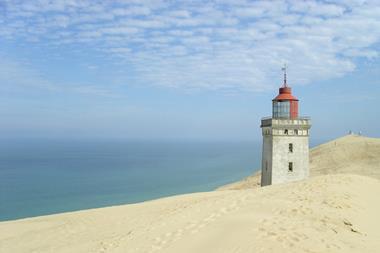DENMARK - Denmark's largest commercial pension provider PFA made a return on investments of DKK16.1bn (€2.2bn) between January and June and said it had been able to boost capital strength by 50% since start of year.
The first-half investment return compares with the DKK790m made in the same period last year.
In absolute terms, total reserves rose by DKK7.4bn to DKK21.6bn, it said, with the solvency ratio climbing to 203%.
Chief executive Henrik Heideby said: "In times of economic crisis, it is all the more important for customers that a pensions company is solid and is able to grow customers' savings."
PFA said its level of capital strength meant it could invest more appropriately, taking the necessary risks to obtain a high return.
"This gives us the opportunity to opt to place a higher proportion of investments in assets with a higher return potential, such as credit bonds and alternative investments," it said in its interim results statement.
Unit-link pensions returned between 5.5% and 8% in the first half, while the average return on with-profits pensions was 5.5%.
Within with-profits investment, equities returned 7.9%, with Danish shares producing 16.1%, quoted foreign shares giving 7.9% and alternative investments returning 5.1%.
Bonds returned 4.4%, and property produced a return of 3%.
PFA's profit-sharing element KundeKapital (customer capital) returned 9.8% to total DKK17bn, the company said.
Pension contributions from customers rose 14% to DKK10.7bn.
Within this, payments into unit-link plans doubled, to account for 63% of PFA's total contributions.
Assets under management grew by DKK20.8bn to DKK345bn.
Pre-tax profit was DKK551m, up from DKK121m in the first half of last year.
Looking ahead to full-year results, PFA said it expected 2012 profit to be slightly higher than the previous year.
Meanwhile, labour-market pension fund Sampension reported an investment return of 5.2% in the first half for both unit-link and traditional pensions.
Risk-spreading activities and its focus on long-term alternative investments had contributed to the result, it said.
Hasse Jørgensen, managing director, said: "The first half was marked by low interest rates and unstable equities markets.
"We achieved good, stable results in the six months by consistently spreading our risk and focusing on building up long-term alternative investments in portfolios."
Overall, Jørgensen said Sampension's result was a consequence of the company's sustained and targeted modernisation.
All areas of the company's products, investment and management had been modernised, he said.
The average investment return for the unit-link product was 5.2% in the January to June period, up from 1.6% in the same period last year.
The with-profits pension product also ended the period with a return of 5.2%, including hedging but before tax, up from a loss of 0.2% in the first half of 2011.
Within the with-profits result, the highest return came from structured credit instruments, which produced a profit of 13.8%.
Corporate bonds, meanwhile, produced 6.8% at lower risk.
Sampension's total assets stood at DKK193.1bn at the half-year stage, up from DKK185.5bn at the end of 2011.
Contributions rose by 3.5% year-on-year to DKK3.8bn.
This growth - which Sampension described as satisfactory in light of developments in the jobs market - was driven primarily by one-off contributions from existing customers, it said.
Costs as a percentage of contributions eased to 2.4% from 2.6% the year before.












No comments yet